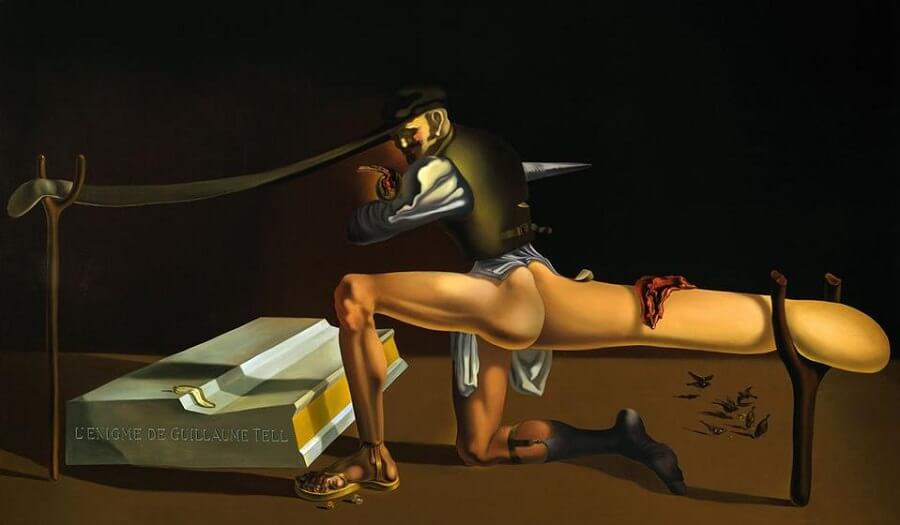The Enigma of William Tell, 1933 by Salvador Dali

Dali's depiction of Lenin in this work seriously offended the other Surrealists when it was shown in 1934 at the Salon des Independants in Paris. Given their Marxist convictions, it is not difficult to see why a group of Surrealists even tried to damage it at the exhibition: fortunately, according to Dali, they were unable to reach it. The painting represents Lenin stripped from the waist downwards with an enormous bare buttock, which Dali described as 'shaped like a breakfast roll with its end held up by a forked crutch'. The irreverence of this image is aggravated by Dali's additional statement that the 'buttock, of course, was the symbol of the Revolution of October 1917.' The motif of the soft watch, first developed in The Persistence of Memory, reappears on a marble plinth; its limpness is visibly reflected in the enormous peak of Dali's cap, which, like Lenin's buttock, also requires artificial support. Why Lenin should have been selected for such unenviable treatment is not entirely clear, nor is it meant to be. However, the meaning of the painting is suggested by the title inscribed on the plinth: Lenin is identified with William Tell, who, according to Dali, represented the oppressive father-figure against whom Dali was himself rebelling at that time.























